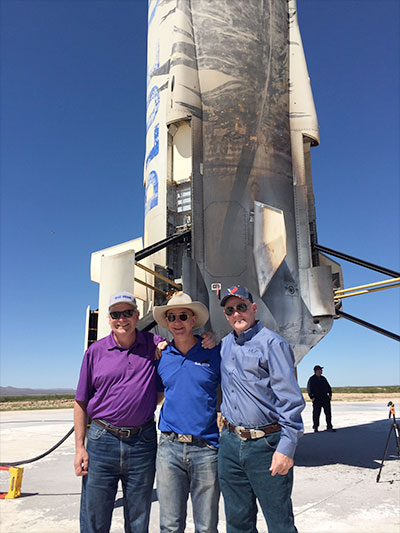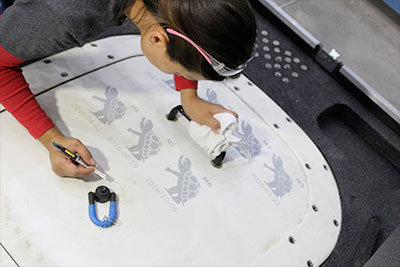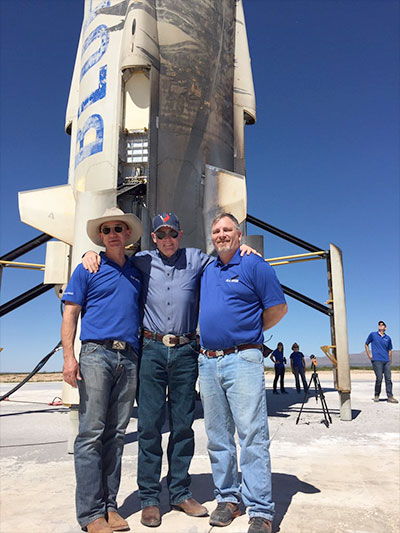 Space News space history and artifacts articles Messages space history discussion forums Sightings worldwide astronaut appearances Resources selected space history documents |
If you have previously registered, but forgotten your password, click here.
The escape motor will vector thrust to steer the capsule to the side, out of the booster's path. The high acceleration portion of the escape lasts less than two seconds, but by then the capsule will be hundreds of feet away and diverging quickly. It will traverse twice through transonic velocities — the most difficult control region – during the acceleration burn and subsequent deceleration. The capsule will then coast, stabilized by reaction control thrusters, until it starts descending. Its three drogue parachutes will deploy near the top of its flight path, followed shortly thereafter by main parachutes. The booster was never designed to survive an in-flight escape. The capsule escape motor will slam the booster with 70,000 pounds of off-axis force delivered by searing hot exhaust. The aerodynamic shape of the vehicle quickly changes from leading with the capsule to leading with the ring fin, and this all happens at maximum dynamic pressure. Nevertheless, the booster is very robust and our Monte Carlo simulations show there's some chance we can fly through these disturbances and recover the booster. If the booster does manage to survive this flight – its fifth – we will in fact reward it for its service with a retirement party and put it in a museum. In the more likely event that we end up sacrificing the booster in service of this test, it will still have most of its propellant on board at the time escape is triggered, and its impact with the desert floor will be most impressive. | ||||||||
| Robert Pearlman | From Jeff Bezos on Twitter: Dramatic New Shepard inflight escape test Tuesday, Oct 4. Live webcast starts at 10:50 a.m. EDT at blueorigin.com. | |||||||
| Robert Pearlman | From Jeff Bezos on Twitter: Weather no-go for tomorrow's New Shepard #InFlightEscape test. Webcast now Wednesday [Oct. 5] at 10:45 a.m. EDT. | |||||||
| Robert Pearlman | collectSPACE Blue Origin's historic New Shepard rocket museum- | |||||||
| Headshot | Now THAT was what I call a successful test! | |||||||
| Robert Pearlman | United Launch Alliance CEO Tory Bruno was at the New Shepard flight: Amazing day in Texas.  | |||||||
| cspg | It worked at T+45 seconds which leaves enough time for the parachutes to deploy and inflate. Now if there's a booster failure at T+15, what happens to the capsule? | |||||||
| Robert Pearlman | The test was conducted at T+45 seconds to coincide with max Q, the point of maximum dynamic pressure, when the capsule and booster were being subjected to the most stress. The escape system is qualified for the entire ascent, from on the pad to nominal separation from the booster. Blue Origin previously demonstrated a pad abort with the same capsule in 2012. | |||||||
| cspg | Thanks for reminding me of what happened 4 years ago!  | |||||||
| Robert Pearlman | From Jeff Bezos on Twitter: Stenciling the 7th and final tortoise onto this hardy and stalwart New Shepard capsule.  | |||||||
| Robert Pearlman | From Reddit, a photo of the booster and capsule as seen at Blue Origin's holiday party: | |||||||
| Robert Pearlman | From Christian Davenport with The Washington Post on Twitter: Blue Origin's New Shepard booster on display at MARS 2017.  (MARS, or Machine learning, home Automation, Robotics and Space exploration, is an invite-only robotics-focused annual gathering organized by Amazon.) | |||||||

